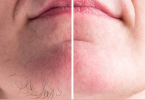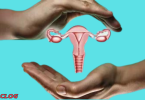Breast cancer is considered one of the most common cancerous tumors in women, as the incidence of this type of cancer in women reaches more than 30%. If there are 10 women with cancer, you will find that at least 3 of them have breast cancer.
Signs of breast cancer are among the things that most worry many women, especially when they feel strange symptoms, especially in the area surrounding the breast, because of their fear of contracting this dangerous disease.
Treating breast cancer has now become possible in light of the emergence of many treatment methods that we will discover later, which has increased hope for a cure.
What are the signs of breast cancer? What is the treatment for breast cancer? Does breast cancer cause death? How to prevent breast cancer? This is what we will answer you in this article.
Definition of breast cancer
Before defining breast cancer, we must first define the cancer cell. It is a normal cell, but it mutated in terms of growth and division, so it began to multiply very quickly, which prevents it from performing its basic function, and thus endangers human life.
As for breast cancer – which is the focus of our discussion today – it is a cancerous mass in the breast that is formed as a result of a change in the cells that make up the breast tissue, and then turns into cancerous cells that are difficult to get rid of. Treatment and elimination. He is in control.
Signs of breast cancer
After we learned about the nature of breast cancer, it is now time to talk about the signs of breast cancer, including the following:
The appearance of an unusual mass in the chest.
- Unusual discharge from the nipple accompanied by blood.
There is swelling under the armpits.
Change in the shape of the nipple.
Unusual chest pain.
Change in breast color.
Redness of the skin on the chest.
When you notice any of these signs in the breast for more than a week, you should consult the best breast surgery doctor immediately for early diagnosis.
Dr. Ashraf Al-Zayat, consultant breast oncology surgeon, confirms that early diagnosis and treatment raise recovery rates to more than 85%, so the appearance of signs of breast cancer is not an indication of the necessity of going to the doctor.
Risk factors that increase the incidence of breast cancer
We learned about the signs of breast cancer in the previous lines. We will now find out which candidates are most at risk of developing breast cancer, and they are those who have one of the following factors:
You have a family history of breast cancer.
Let’s grow up.
obesity.
Prolonged hormone therapy, especially after menopause.
Smoking.
Menstruation comes at an early age, such as 8 or 9 years.
Cessation of menstruation at a late age, i.e. after 54 years.
Exposure to radiation.
All of these factors increase the rates of signs of breast cancer appearing in the body, but this does not mean that people who are not exposed to these reasons do not develop breast cancer. On the contrary, all people – especially women – over the age of forty are susceptible to this disease in all its forms.
Dr. Ashraf El-Zayat, the best breast oncology surgeon in Egypt, advises periodic examination by a specialist doctor, especially for women over forty, to quickly detect any problems and increase the rates of breast cancer. healing.
Does an unhealthy lifestyle increase the incidence of breast cancer?
An unhealthy lifestyle contributes to increased signs of breast cancer. A woman who does not follow a diet and eats foods rich in fat is of course more susceptible to cancer, and a woman who does not exercise and does not drink enough water is more susceptible to cancer than others. For breast cancer.
How to treat breast cancer
Correct diagnosis is the beginning. This is confirmed by Dr. Ashraf Al-Zayat. It is very important to identify the problem first, which leads to how to treat the cancer.
Treatment of malignant breast cancer
Dr. Ashraf Al-Zayat, with his extensive experience in treating malignant breast cancer, confirms that the basic principle in treating such cases is surgical intervention, in addition to relying on certain complementary treatments that increase the recovery rate.
Treating breast cancer with surgery
Surgical treatment for breast cancer depends mainly on removing the tumor in that area, in addition to some surrounding tissue. Then comes the second step, which includes taking a sample of the lymph nodes, to ensure that there are no infected lymph nodes.
Treating breast cancer with chemotherapy
Chemotherapy is used if at least two of the following reasons combine:
Tumor size exceeds 2 cm.
Lymph nodes are infected.
The patient is a young man.
Hormone receptor negative.
Positive hair receptors.
Grade III tumor.
Chemotherapy is mainly used as a complementary treatment, but in some critical cases chemotherapy is given before surgery, in order to reduce the size of the tumor.
Targeted therapy for breast cancer
A large percentage of breast cancer patients – about 25% – have a protein layer called HER2, and these patients need targeted treatment, which includes giving the patient medications to attack the cells on the surface of this protein layer.
Hormonal therapy
In 75% of cases of malignant breast cancer, cancer cells feed on estrogen, and in this case the woman is given medications that prevent the secretion of these hormones, which disrupts the production of cancer cells.







